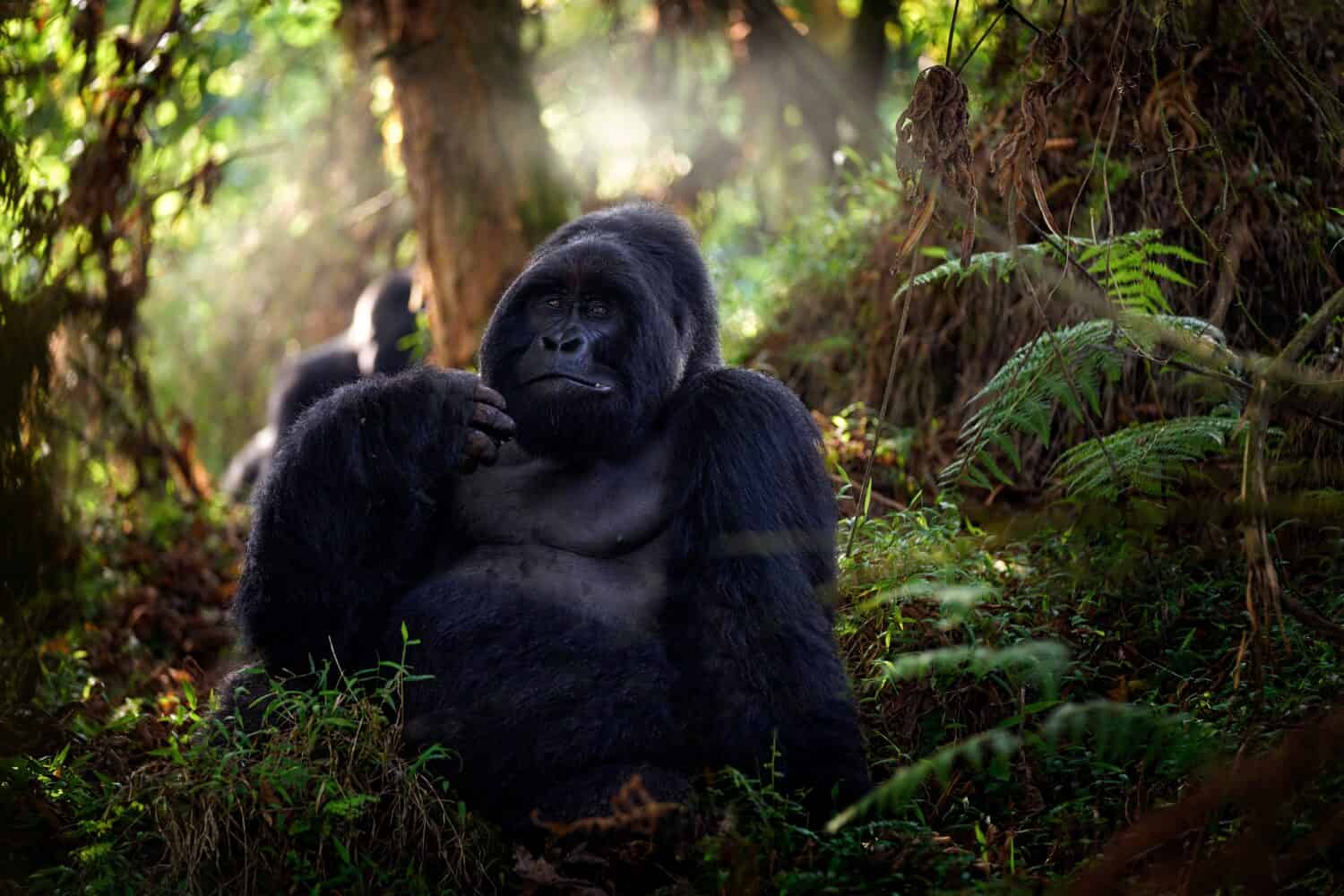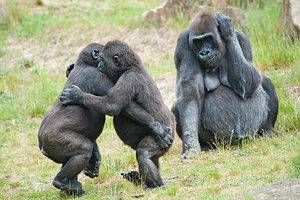There are two species of gorillas. These include the Western gorilla (Gorilla gorilla), with subspecies Western lowland gorilla and Cross River gorilla, and the Eastern gorilla (Gorilla beringei), with subspecies mountain gorilla and Eastern lowland gorilla.
Did you know that we share 95%-99% of our DNA with gorillas? These powerful primates have a large muscular build and distinct facial features. They have flat noses, sharp teeth, and long limbs that they use for climbing and knuckle-walking. A silverback gorilla is an adult male gorilla that develops white, grey, or silver hair around its shoulders and back.
However, silverback gorillas are much larger than the females. They are the protectors and leaders of their group and dominate their territory. The average gorilla is between 4-5 feet tall and can weigh up to 440 lbs. But what is the largest silverback gorilla, and how much did it weigh?
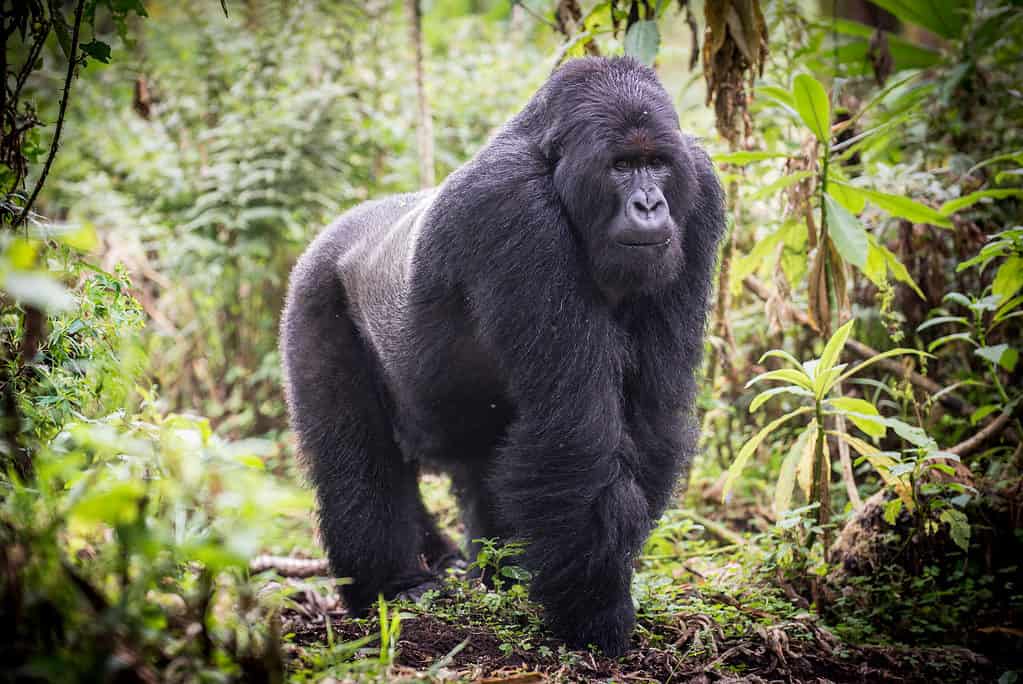
Mountain gorillas live on the slopes of the Virunga volcanic mountains.
©Jurgen Vogt/Shutterstock.com
The Largest Silverback Gorilla
The largest silverback gorilla was a mountain gorilla that weighed an impressive 589 pounds and was 6 feet tall! The gorilla was hunted in Cameroon, a country located in West Africa. This gorilla was an incredible size and had exceptional strength, which made him a force to be reckoned with.
Female gorillas are much like humans, with a gestation period of 9 months. Their offspring weigh roughly 4 pounds. From 4 months to 3 years old, young gorillas will ride on their mother’s back. They become sexually mature enough to leave their mother’s group and seek out a female to produce their own offspring between the ages of 7 and 10. These fascinating primates can live 35 years in the wild.
Male mountain gorillas are, on average, 5.5 feet tall, weigh up to 421 pounds, and have an arm span between 8-10 feet. The largest silverback gorilla is 40% heavier than the average mountain gorilla. How does this compare to bears? The average male grizzly bear weighs 400-600 pounds.
Let’s discover why the largest silverback gorilla weighed as much as a bear!
1. Diet
Mountain gorillas live on lush mountain slopes filled with delicious vegetation for gorillas to thrive on. These huge primates don’t drink a lot of water but consume more than 100 different kinds of plants. Some of the food mountain gorillas consume include:
- Leaves and stems
- Plant roots
- Seeds
- Fruit
- Flowers
Silverback gorillas can consume up to 75 pounds of food each day! Thanks to their strong jaws and teeth, they can easily chew through tough vegetation. In addition, their stomachs and enlarged intestines hold and digest large quantities of food. Much of the plants they consume are protein-rich, contributing to increased muscle mass. This is why the largest silverback gorilla got to weigh as much as a bear.
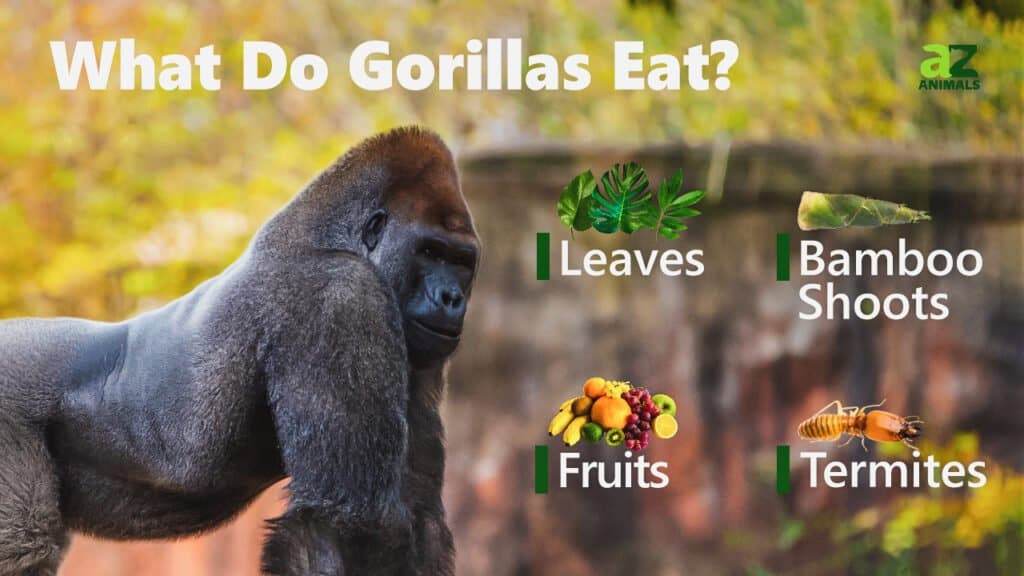
2. Sexual Dimorphism
Sexual dimorphism is a term used to describe the differences between two sexes apart from the obvious reproductive organs. These physical differences can include fur color, body size, height, and other physical features that tell them apart. A great example of sexual dimorphism is lions and elk. Male lions have a mane, while females don’t. Male elk grow antlers, and females don’t.
Mountain gorillas are sexually dimorphic, like the other species and subspecies of gorillas. Female mountain gorillas weigh half of the male gorillas and are only around 4 feet tall. Male gorillas tend to have a pronounced chest with larger muscles. In addition, male mountain gorillas have larger jaws and canine teeth than females.
Another notable difference between male and female mountain gorillas is their fur color. Mature males are called silverbacks because the hair on their backs will turn grey or silver. This fur is normally shorter than the rest of its body parts.
Why does sexual dimorphism play a role in a silverback getting so big? The answer is simple – competition. When male gorillas reach maturity, they can compete for the role of leader of the troop, and to win, they need to be large. As these large males continue to have larger male offspring, the average size will increase over several generations.
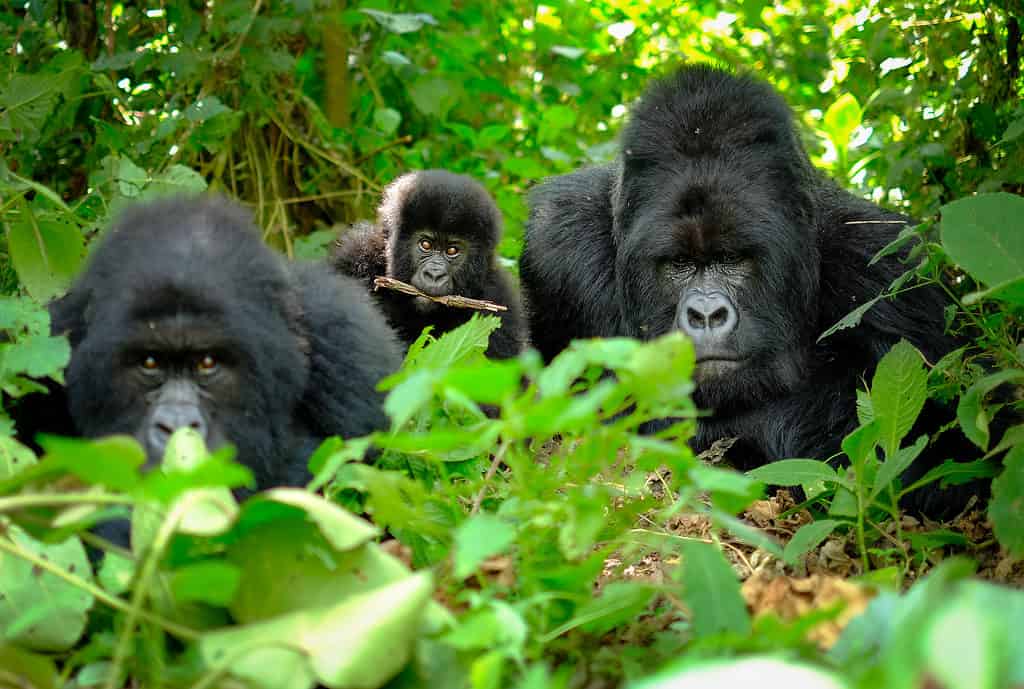
Silverback gorillas are more than twice the size of female gorillas.
©Marian Galovic/Shutterstock.com
3. Hormonal Changes
While diet and genetics play a crucial role in why this gorilla got so big, hormones are a major contributing factor. When confronted with competition, gorillas display aggressive behavior, increasing testosterone levels. According to research, “when male status is linked to mating success, and dependent on aggression, high-ranking males normally maintain higher testosterone levels than subordinates, particularly when dominance hierarchies are unstable.”
As young male gorillas mature, they will transition into silverbacks, and along with this transition is an increase in hormonal changes. This stage also plays a role in an increase in strength and body size. Their muscle mass and bone density will increase throughout these physical changes.
The social structure of the troop plays a critical role in hormonal changes. Should there be a lot of male competition in the group, the high testosterone levels contribute to increased muscle mass and strength. The male’s size and strength will depend on their reproductive success.
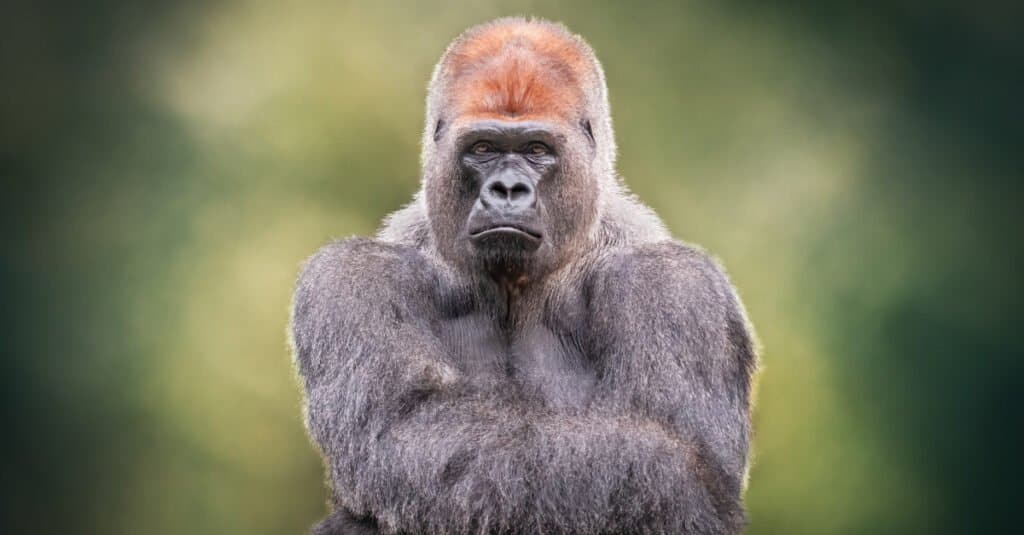
Gorillas use sticks to measure water depth and make a bridge to cross over deep waters.
©iStock.com/SooniosPro
Other Large Silverback Gorillas
Another notably large gorilla was held in captivity at the St. Louis Zoo. This eastern lowland gorilla named Phil had a recorded weight of 860 pounds. Male gorillas in captivity are overweight and can weigh more than 600 pounds. Phil was the largest eastern lowland gorilla in captivity and died from ulcerative colitis.
In 1938, one of the tallest gorillas was shot in Alimbongo, North Kivu. This silverback gorilla had a recorded height of 6 feet and 5 inches and a weight of 483 lbs. In addition, its arm span was 8 feet and 10 inches.
Threats to Mountain Gorillas
Mountain gorillas live in the Albertine Rift montane forests in east-central Africa. You can find small troops of gorillas roaming the slopes of the dormant volcanoes of Visoke, Mikeno, and Karisimbi.
These lush mountains are spread throughout three national parks, which include:
- Mgahinga in Southwest Uganda
- Volcanoes in Northwest Rwanda
- Virunga in the eastern Democratic Republic of Congo
Only around 1,000 mountain gorillas are left, which means they are listed as endangered by the IUCN. Thankfully, mountain gorillas numbers have increased significantly since 1981, when they were at an all-time low of 254 individuals.
There are various threats to the mountain gorilla species, including:
- Poaching: Not only can mountain gorillas get caught in snares intended to catch antelope, but illegal poaching can also occur.
- Habitat loss: There is competition for agricultural land use and the growing population in the area, which can occupy the natural forest home of mountain gorillas.
- Disease: Humans and gorillas are closely related. While we have immunity to many illnesses, they can easily spread to gorillas. It’s difficult to prevent the spread due to human contact with poachers, tourists, locals, rangers, and scientists. Therefore, keeping a safe distance from the mountain gorillas is paramount.

Bwindi Impenetrable Forest National Park (pictured) in southwestern Uganda is also home to the mountain gorilla.
©Greens and Blues/Shutterstock.com
Final Thoughts
Silverback gorillas are fierce and highly protective of the individuals in their troop. They have intricate social structures, and male gorillas’ position within the group depends on their size and strength.
The largest silverback gorilla weighed as much as a bear, and the three likely reasons include diet, sexual dimorphism, and hormonal changes.
Thank you for reading! Have some feedback for us? Contact the AZ Animals editorial team.

